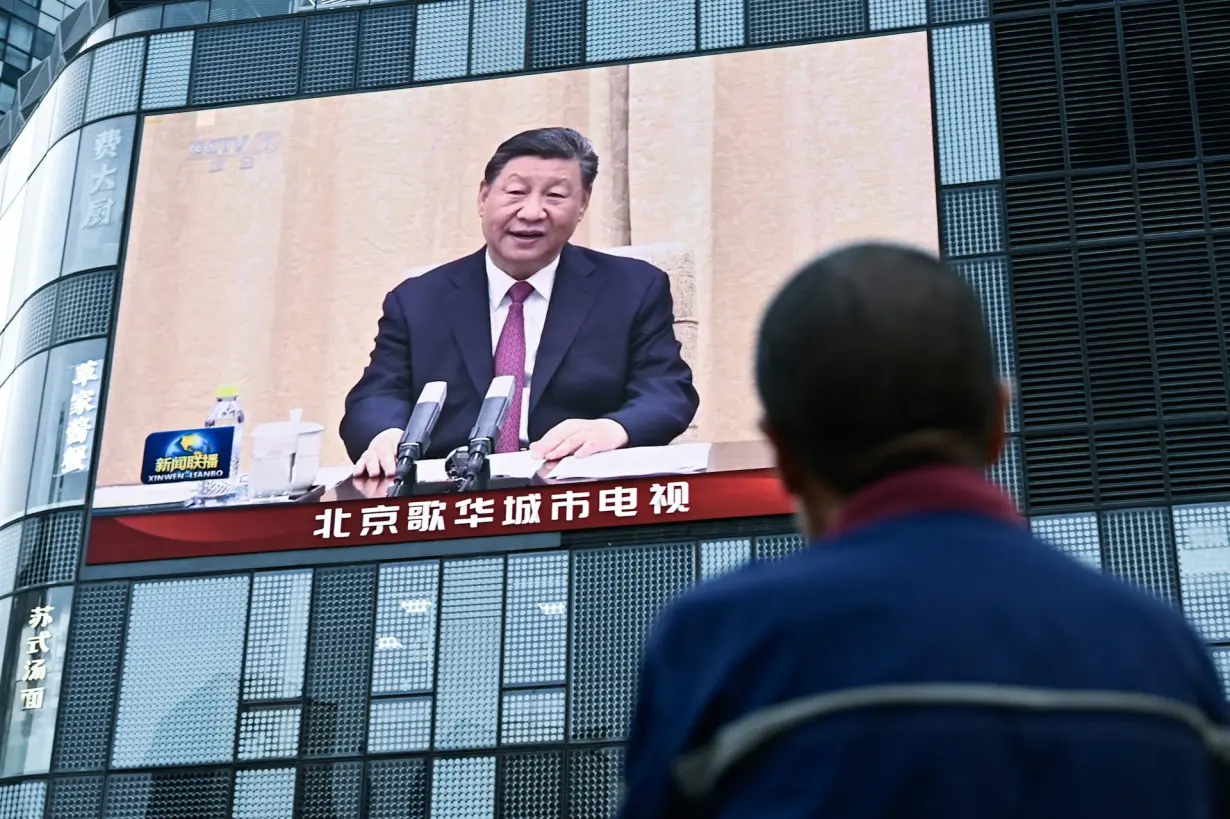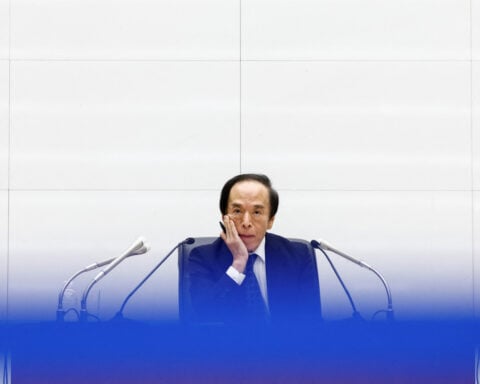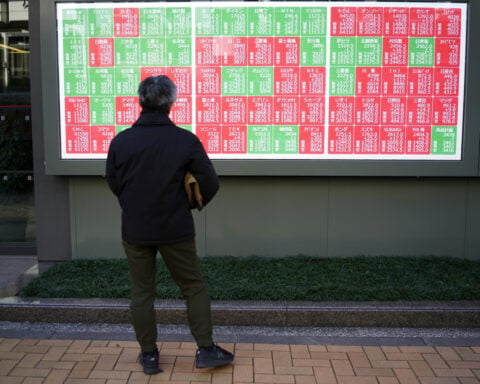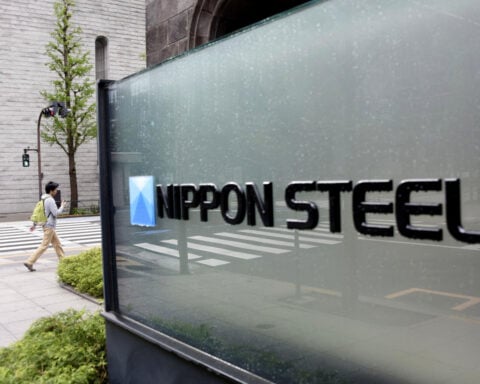Chinese President Xi Jinping has laid out his vision for China’s economic and social future – and it places Xi Jinping at the very center.
Having cemented his political legacy at the 20th Chinese Communist Party Congress in October 2022 by being confirmed leader until at least 2027, the “chairman of everything” has now set out how he sees the next few years going.
The road map was discussed at the important third plenum that took place July 15-18, 2024. To China watchers like myself, the plenum – which brings together party leaders to discuss great matters of state and economy – gives key insights on the current thinking in Beijing as to where the country sees itself now and where it wants to be. The plenum is accompanied by an official communique and then a more detailed “decision” distributed days after the meeting.
Xi at the wheel
Often the plenums are decisive in setting out new directions – take, for example, the 1978 meeting that heralded the end of the disastrous Cultural Revolution and the beginning of Deng Xiaoping’s opening up of China.
This latest plenum was a far cry from such a pivotal moment. In fact, it offered little new in terms of the actual policy. But what it did do was confirm that Xi sees no need to deviate from the course he has set out, or to change the driver behind the wheel.
The decision document circulated on July 21 made clear Xi’s desire for authoritarian political control, albeit tempered with a populist approach to some of the issues facing China.
The plenum’s decision is primarily a political document aimed at rallying the party faithful behind Xi and his preference for a heavily centralized, state-run economy. There were no signs that Xi has any intention of significant reform in the face of a weakening economy.
Rather, what emerged was an indication that any questioning of Xi’s policies would not be tolerated – the communique calls for dealing effectively with “risks in the ideological domain,” while improving “public opinion guidance.” In other words, both the Communist Party and the people need to trust in Xi.
However, in a possible sign that unease persists, the decision stressed the need to establish Xi’s core position on the all-important Central Committee and the party as a whole. That position had, in theory, already been cemented, prompting the question: Why the need to emphasize again now?
Light on details
Xi and his political thoughts pepper the decision, and it makes clear that both party – and his – control is crucial. This approach will maintain the ongoing tension between the need to innovate to address China’s economic needs and making sure that any changes to policy take place firmly within the framework laid down by party leadership.
At its core, the decision lays out how Xi intends to safeguard what he sees as his legacy.
As such, it touches on economic, social and security concerns that could threaten that legacy – be it faltering growth, tensions with regional rivals and the U.S, growing income inequality and a divide between urban and rural economies.
The decision is packed full of intentions, but provides few concrete proposals. Even so, the broad strokes it provides give a glimpse into Xi’s thinking.
Conflicting messages
With respect to the economy, the decision confirms the shift from an obsession with growth at all costs to an emphasis on the quality of growth.
As such, it stresses “high-quality development” as the key component of Xi’s new philosophy. In real terms, this means a shift from the traditional drivers of the economy – labor, capital and the land – to new technologies and innovations, such as artificial intelligence and green energy.
This approach is aimed at moving China up the value-added chain and developing the cutting-edge technologies for the future.
Xi has touted the move to “high-quality development” as a way to create a more equitable society. But given that the the vast majority of Chinese workers aren’t employed in these advanced sectors, it is difficult to see how Xi could pull this off.
Similarly, when it comes to remedying the slowdown in the Chinese economy, the decision’s policy priorities send conflicting messages.
It reaffirmed the need for China to continue global engagement and to place the private sector on an equal footing with its state-owned counterpart. However, it makes clear that it is the state sector and state financing that will play the major role in helping the party meet its goals, while the private sector will receive “guidance.”
And investors appear skeptical: The Chinese stock market saw its largest drop in six months when the decision was published.
And there is some doubt that China’s commitment to global engagement will be sufficient to calm the concerns of the international business community.
Addressing local concerns
The decision certainly identifies some of the key areas of domestic concern in China. Take, for example, the thorny problem of local government debt. Local governments are burdened with mandates set by the central government to provide for a range of expensive social programs, including pensions and health care insurance – which are not funded adequately.
While local authorities in the past have looked to land sales to plug the budget gaps, a severe slump in property prices has left their finances looking increasingly shaky.
The decision calls for local governments to have more financial resources at their disposal, funded by a larger slice of tax revenue being distributed centrally.
Further, a “clear division” of powers and responsibilities between the central and local authorities is to be established – something the party previously promised would be implemented by 2020.
Concern from party leaders over wealth inequality is reflected in the decision, which calls for more inclusive public services to provide a cushion for those most in need.
But the most glaring inequality is driven by the differences between China’s rural and urban areas. Rural households in China suffer significantly lower income, and the gap has grown in recent years.
The decision sees greater and more effective urbanization as key to resolving inequality. A key part of the plan is to eliminate the system of household registration that ties individuals to their place of birth. As a result, many rural people who move to cities are denied access to better urban services, as they are still considered to be villagers.
The abolition of household registration has been promised for many years, but it is yet to be realized.
Blind faith not enough
Taking as a whole, the plenum’s decision reveals many intentions, but offers little detail about how to achieve it all in the timeline set – just five years.
But in not offering anything new, the decision is making a point: Xi’s approach – long established – was, and is still, the best way to move China forward. Calls from within China and outside for fundamental changes are, it follows, to be ignored.
But there is a danger for China – and Xi’s legacy – in adopting such intransigence. Many of the problems plaguing China – in particular the gradual slowing of economic growth and creeping inequality – demand more than just good intentions and blind faith that the party knows best.
Anthony Saich does not work for, consult, own shares in or receive funding from any company or organization that would benefit from this article, and has disclosed no relevant affiliations beyond their academic appointment.
Source: The Conversation

 Firefighters prepare for increasing gusts following brief reprieve for LA area
Firefighters prepare for increasing gusts following brief reprieve for LA area
 John Ratcliffe, tapped by Trump to lead the CIA, will face questioning in the Senate
John Ratcliffe, tapped by Trump to lead the CIA, will face questioning in the Senate
 What to know about Trump's attorney general pick Pam Bondi as she faces questioning on Capitol Hill
What to know about Trump's attorney general pick Pam Bondi as she faces questioning on Capitol Hill
 Nippon Steel wants to work with Trump administration on US Steel deal, Mori tells WSJ
Nippon Steel wants to work with Trump administration on US Steel deal, Mori tells WSJ
 After cable damage, Taiwan to step up surveillance of flag of convenience ships
After cable damage, Taiwan to step up surveillance of flag of convenience ships
 BOJ will raise rates if economy, price conditions continue to improve, Ueda says
BOJ will raise rates if economy, price conditions continue to improve, Ueda says
 Manatees congregate in warm waters near power plants as US winter storms graze Florida
Manatees congregate in warm waters near power plants as US winter storms graze Florida
 AAPI adults prioritize immigration, but split on mass deportations: AP-NORC/AAPI Data poll
AAPI adults prioritize immigration, but split on mass deportations: AP-NORC/AAPI Data poll
 As fires ravage Los Angeles, Tiger Woods isn't sure what will happen with Riviera tournament
As fires ravage Los Angeles, Tiger Woods isn't sure what will happen with Riviera tournament
 Antetokounmpo gets 50th career triple-double as Bucks win 130-115 to end Kings' 7-game win streak
Antetokounmpo gets 50th career triple-double as Bucks win 130-115 to end Kings' 7-game win streak
 Zheng loses to No 97 Siegemund, Osaka rallies to advance at the Australian Open
Zheng loses to No 97 Siegemund, Osaka rallies to advance at the Australian Open
 All seeing, all powerful, all Xi.
All seeing, all powerful, all Xi.







